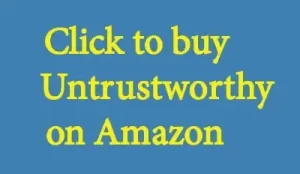I wrote 1960s Temporal Crimes by the seat of my pants. But I don’t think it shows its seams too badly.
Review – 1960s Temporal Crimes
Welcome back to my universes, time traveling bounty hunter (at times) Sharon Ensley.
I wrote this story during first quarter 2023. It’s kind of long. So, I’m not so sure it qualifies as a short story. Maybe it’s a novella? I don’t know. I just work here. 😉
Background
It was maybe half a year after I had been working closely with a critique group. It went all right, but they were on the west coast. When time switched to daylight savings, I could not make the meetings any longer.
One of the stories was about a Jewish gangster. This may very well have been on my mind when I dreamt up small time Jersey thug Ray Hall.
Plot
On her first solo trip in time, Sharon Ensley’s tech cracks. Unable to get home, she enlists the help of small time mobster Ray Hall. Sharon has to capture criminal Marcus Vandermore and bring him back to their time. And the only way she’ll be able to do that is to take Marcus’s tech.
But the trip to 1961 New Jersey isn’t all it seems, because Ray isn’t what he seems. For Sharon to do the right thing, but also do her job, it’ll take some fancy footwork. Is the rookie time traveler up to it?
Characters
The characters are Sharon Ensley, Ray Hall, Peggy O’Shaughnessy and her father Declan, Marcus Vandermore (in the past, he calls himself Victor), mob boss Les Hargreaves, and mob lieutenant Ralph Appleton.
I really enjoyed giving the hoods such all-American/nonethnic names.
Ray also refers to nurse’s aides named Rosalie (with her son, Jean-Paul) Baptiste, Juanita Rodriguez, May St. John, Micheline St. John, and Deborah Toussaint.
The story is from Sharon’s point of view. It works as more or less a prequel to both A Chance Encounter in Time and …And the Walls Came Tumbling Down Again.
Memorable Quotes {Ray and Sharon are Speaking}
“Oh, no, you don’t. Don’t be changing the subject on me. How can I help you? Tell me, flat out, the whole truth.”
Peggy arrived with the fries. “The complete, flat out, whole truth is these were reheated.” She winked at Sharon. “But you never heard me say that.”
“Of course not.” Sharon took a still-hot fry and tasted it. Good Lord, real potatoes are amazing. I don’t even care that they were reheated. These people have no idea what they’ve got.
Once Peggy was gone again, Ray leaned over, closer to Sharon. In a low voice, he asked again, “What’s the whole truth? You know, so help you God and everything.”
Sharon sighed. If this wasn’t my first time soloing, I’d probably have a good answer for that. So, I guess my only choice is to tell the truth. “The guy I’m looking for, Vandermore, can be dangerous. I figure you can put your hand on weapons if you ever have to.”
“And?”
“And part of my taking him back is taking possession of his tech.”
“Er, why? Don’t you have some sort of a machine or whatever of your own? Otherwise, how could you have gotten here in the first place?”
“I do. But it’s not working quite right.”
“Ah, and there it is.” He stole one of her fries. “You’re afraid you’re stuck here.”
“Well, yeah. And you’ve got fries of your own.”
“I prefer a little petty larceny. But in all seriousness, there are other people you could have turned to. So, I repeat, why me?”
“When I scanned you, I found traces of Vandermore’s DNA. Ray, you met him.”
Rating for 1960s Temporal Crimes
The story has a K+ rating. There is no real violence, although there are hints of it. Also, there is some swearing, but not too much.
Takeaways for 1960s Temporal Crimes
Like a lot of my stories, I am not too thrilled with how it ends. So, I will most likely start to think of an alternative one of these days.
It was fun bringing Sharon back. This story works particularly well as a prequel to A Chance Encounter in Time. But since both stories involve her being stuck due to her tech failing, I should probably rethink the pretext as well.
Want More of my Short Stories and Novellas?
If the story of Sharon Ensley collaborating with a small-time hood resonates with you, then check out my other articles about my shorter works.
Short Stories
For a complete list of my shorter works, please be sure to check out the Hub Page—Short Stories.
Leave a Comment



You must be logged in to post a comment.